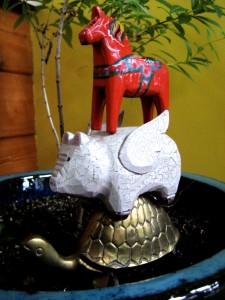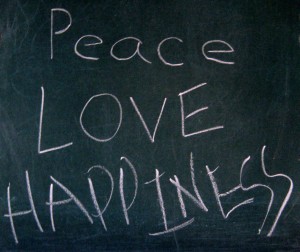At a certain level of reality, I and We become One. Growth might be defined as an ever-expanding realization of our essential Oneness. In the meantime, we grapple with the discovery, ownership, and coordination of our many parts.

– Photo by Jan Ketchel
Within the self of every “individual” are many parts: some known, many unknown, and still others disowned. Psychology has coined the terms conscious and unconscious to differentiate between those parts that we know about from those that we don’t know about but also are.
At the center of the known self—the seat of consciousness—is the ego. The ego has many “parts,” including the “face” it shows the world, called the persona, as well as a younger child state, and an adult state. Each of these parts has its own ambitions, needs, and motives. Being conscious “parts” allows each of these centers to have relative accessibility to awareness. That is, we are basically familiar with these states of being. They may, and often do, squabble among themselves.
For instance, the persona—the actor that we present to the world—often sees itself as the true self. The fact that I am a psychotherapist is indeed a real part of me, however, it is not the whole of who I am.
In another example, the adult ego, with its capacity to plan, organize, and make things happen, may trump the needs and desires of its child part, who wants to play.
The permutation of struggles at the ego level alone are staggering, particularly when the parts become tricksters in their maneuvering.
Trickster is a character who has an ulterior motive, a secret ambition or intention that powers its behavior. Trickster has little interest in fairness, cooperation, or consciousness. It’s goal is to get what it wants.
Trickster may be intelligent and cunning, or foolish and obvious, but trickster definitely does not play by the rules. Nonetheless, if we are willing to slow down the action and reflect, the trickster in all our conscious parts can be identified and a resolution to contradictory motives becomes possible.
However, when we approach the depths of the unconscious mind the plot thickens, as trickster can allude all but a very determined introspection.
The unconscious mind, all that we don’t know of who we are, is composed of countless layers. The uppermost region houses all that once was conscious but for a myriad of reasons has been erased from conscious awareness. Here we find many traumatic experiences, as well as parts of the ego-potential deemed unworthy of development.
Traumatic parts have a life of their own and often function as tricksters bent on being discovered by the conscious mind. For instance, a news item on TV might trigger an intense emotional overreaction, brought on by a traumatic memory insisting on being consciously redeemed.
Similarly, rejected ego parts—forming what Jung called the shadow—may function as tricksters by projecting a compelling but distorted perception onto the motives of a friend or foe that actually reflects the true feelings of the rejected inner part but completely distorts outer reality.
As we go deeper into the unconscious mind we encounter what Jung called the anima/animus parts, the contrasexual components of the psyche, unrealized at a conscious level. These parts have their trickster ability to project themselves in powerful attractions to people in the world that distort completely who they really are. These trickster entrapments form the core of many troubled relationships.
At the center of the unconscious mind is the Self, the CEO of the entire psyche. The role of the Self is to establish balance in the entire psyche—conscious and unconscious. The Self is the higher power of the psyche. Ideally, the ego center of the conscious personality will subordinate itself to the dictates of the Self, which has the interests of the greater whole in mind.
Unfortunately, the ego often takes on its own trickster side, subverting the true needs of the Self, using all its power for decision and free will to accomplish its own aims.
If the imbalance thereby generated is too extreme, the Self counters with its own trickster side and generates symptoms of fear in the ego, such as an agoraphobia, where the ego can’t leave the house. To rein the ego in, the Self can also create psychosomatic symptoms, such as panic attacks or physical illness, to interfere with the ego’s willfulness.
The Self might also generate dreams that preempt the ego’s control through a terrifying nightmare that restores the waking ego to humility.

– Photo by Jan Ketchel
The difference between Self as trickster and all the other personality parts as trickster is its selfless intentions. The Self seeks unity and balance as its aim. When the other parts of the personality employ the trickster, it generally reflects a power play to meet individual needs, often at the expense of the greater needs of the overall Self.
The Self is only forced to become the trickster when the ego refuses to listen to its guidance. When the ego, like a good General, looks to the Self as Ruler, the Self responds with supportive guidance, energy, and freedom from symptoms.
So, trickster to trickster, stay in alignment with the Self, a much smoother ride to wholeness!
Bumping along,
Chuck

